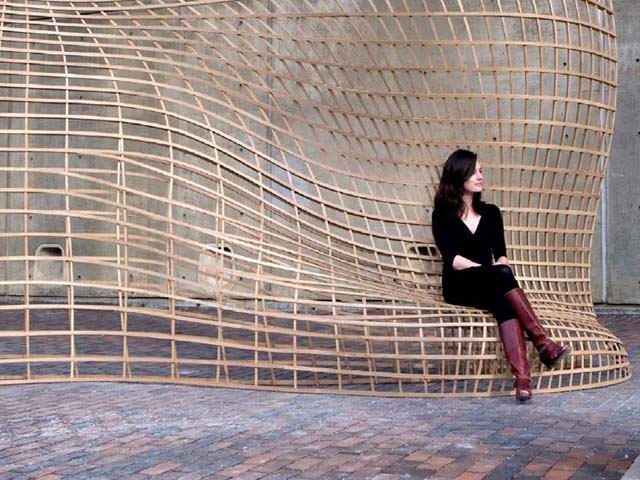Steam-Bent Wood Lattice Morphology
Bending solid wood is a traditional woodworking technique. As compared to additive or subtractive fabrication techniques, this forming process has considerable advantages for producing curved wooden parts: bending wood is materially very efficient and structurally advantageous, as it reorients the grain direction to follow the part’s curvature, avoiding excessive fiber run-out on the edges and cross-grain weaknesses.
As the material properties of wood are dependent on temperature and moisture content a traditional method for extending the plasticity of a number of hardwood species, as for example ash, beech, birch, elm and white oak, is steaming. However, traditionally steam-bending processes require a mould that defines the curvature of the part to be formed. This project explored ways of developing a computational design process that allows the free forming of steamed white-oak slats without the need for a 100 percent contact mould. In order to achieve this, a large number of physical tests were conducted investigating the process parameters of steaming as for example temperature, time the specification parameters of the slats such as species, fiber direction, initial moisture content, thickness, in relation to the forming figure that the slats find when the position of one endpoint is translated in space in relation to the other. The resultant data was used to set-up a computational form-finding tool for a multilayered lattice system constructed from bent and twisted white oak slats.
The developed integrative computational design tool was tested by constructing a full scale prototype from more than 1000 geometrically unique parts. The lightweight structure is computationally derived as a double layered lattice providing both a spatial division and a seating surface, in which the thickness of slats, the number of layers and the depth of the system responds to the load-bearing requirements. Utilizing a custom-built steam chamber and a simple CNC-cut formwork that guides the free forming of the steamed pieces by spatial reference points, the prototype was constructed from white oak slats without any additional mechanical fasteners or fixings.
Performative Wood Studio (Achim Menges)
Jeffrey Niemasz, Jon Sargent and Laura Viklund
Harvard University Graduate School of Design, 2009







